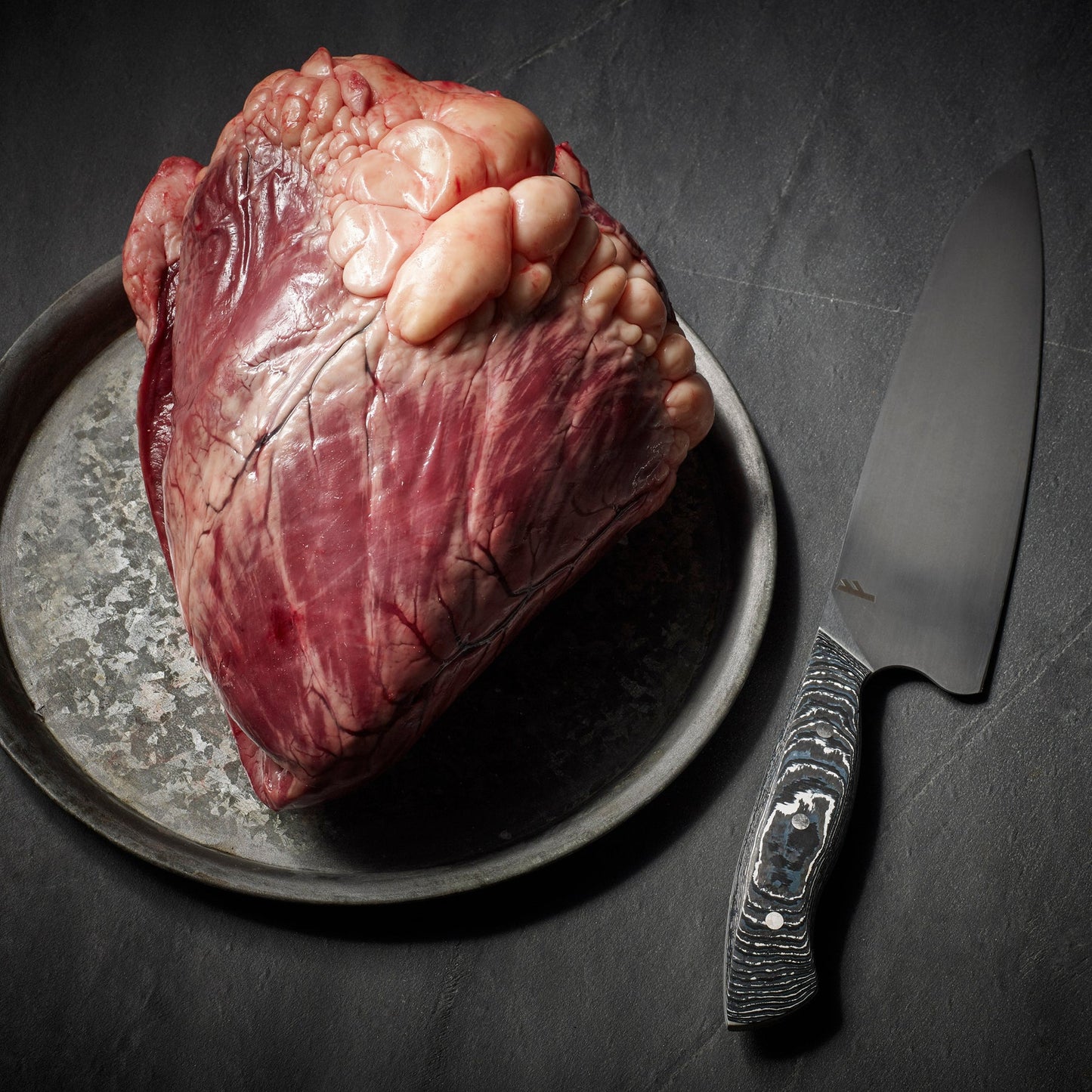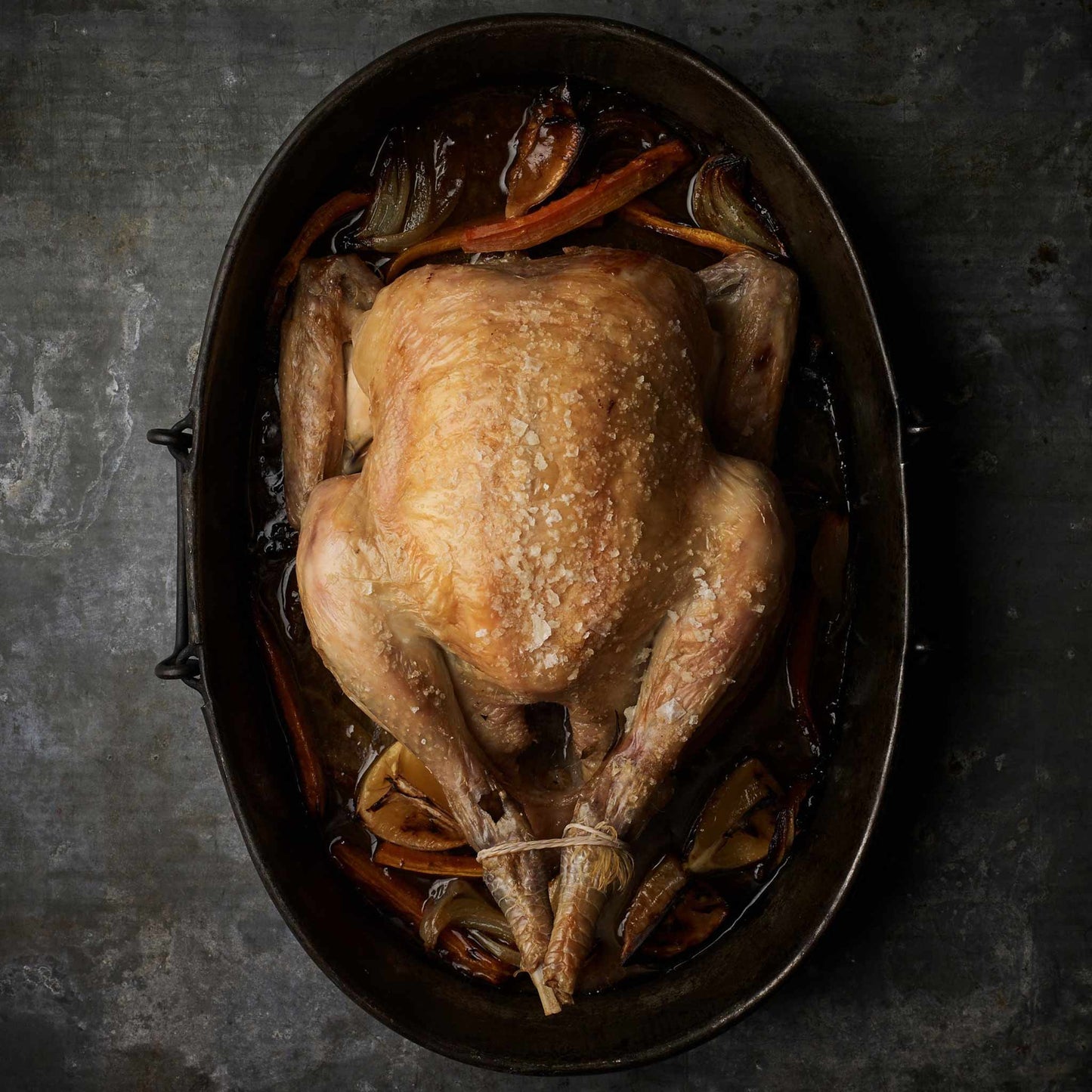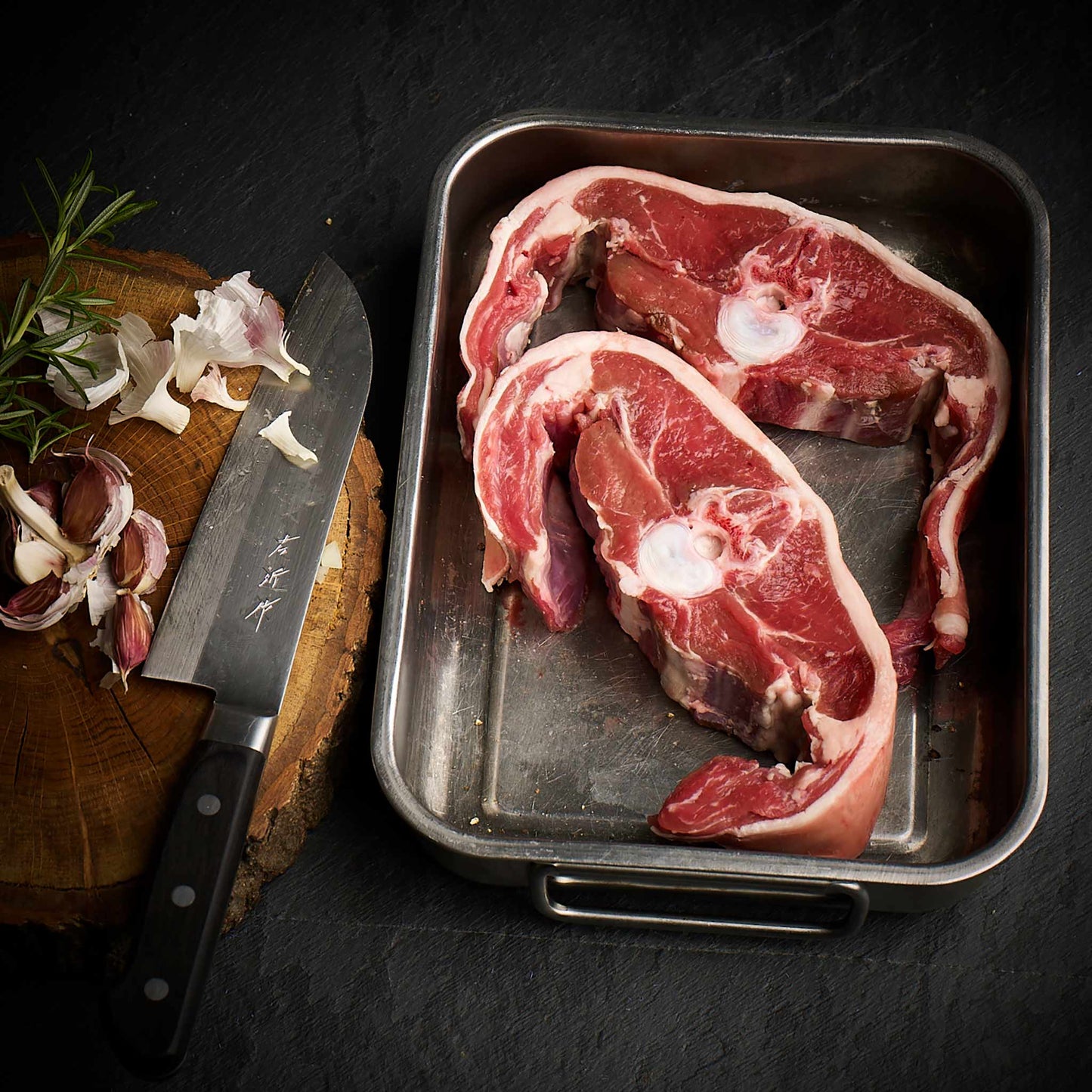We source our chicken from one farm in Leicestershire. The farm is Pasture for Life certified and rears truly free range, outdoor birds.

Offal: many people are scared of it, but why? It's the most nutritious part of the animal, and the most richly flavoured.
What is offal?
Offal is defined by Wikipedia as:
Offal (/ˈɒfəl/), also called variety meats, pluck or organ meats, is the organs of a butchered animal. The word does not refer to a particular list of edible organs, which varies by culture and region, but usually excludes muscle.
On our website you can already find a small range of offal and we plan to expand our offering in the future. In the meantime we'd like to introduce these under-appreciated ingredients to those of you who might not be familiar with them.
Beef heart
It's obvious what beef heart is, yet many people have never tried it. Like tongue it is not too offaly in flavour, and is technically a muscle meat as well as being offal.
Heart is traditionally served stuffed in British cuisine as it has an obvious cavity, but other countries serve it differently, often cut into strips and cooked on hot coals or a BBQ.
Heart nutrition
Beef (and chicken) heart is exceptionally high in a few key nutrients.
B12 100g of beef heart contains a whopping 383% of your recommended daily value of vitamin B12. That’s almost four times more than your body needs to get by. In fact, most people find extra vitamin B12 intake highly energizing. It contributes to mental health, immune function, and normal cell division.
B2 (Riboflavin) 100g of beef heart contains 61% of your recommended daily value for vitamin B2. This B vitamin contributes to energy generation, healthy vision, and proper cell division. Like B12, it can be used to combat lethargy and fatigue.
Selenium A small serving of beef heart contains nearly half your selenium RDA. Selenium is essential for thyroid function and immune function. Many of this mineral’s other benefits are generalized enough to ‘trickle down’ into other areas. For example, selenium plays an important role in repairing damaged DNA. Ensuring adequate selenium intake might help you avoid cancer and live up to your genetic potential.
Coenzyme Q10 (CoQ10 for short) is an interesting antioxidant also found in large quantities in beef heart. It has antioxidant, anti-aging, antistress effects.
DWORF Peptides Beef heart is rich in newly-discovered and yet-to-be-discovered peptides, too. Foremost among these special proteins is dwarf open reading frame peptide, or DWORF. These may improve your heart’s overall function and contraction strength.
How to prepare heart
We love this classic British ox (beef) heart recipe from Great British Chefs.
Method
1. Begin by prepping the heart. Your butcher might have prepped it already but usually heart comes with muscle fat, arteries and blood vessels. This isn’t something to be scared of – it is actually quite beautiful to see what a heart looks like.

2. Remove the hard fat – don’t worry if you cut away a little of the meat, it is safer to do this than it is to cut into the tough fat.

3. Trim away the two flaps on the top of the heart. These used to be known as ‘deaf ears’ and you’ll see why, as they look a little like pigs' ears.

4. On the outside of the heart you will notice some large arteries and blood vessels. Just cut these out.

5. On the inside of the heart, remove the stringy parts shown in the photo. If the heart still has a piece that looks a bit like a windpipe, also remove this.

6. You should end up with two halves of heart without any hard bits left. There is no need to completely remove all the fat – a little will be fine and will give it flavour.

7. To make the duxelle, blanch kale in boiling salted water, then refresh in cold water.
8. Fry bacon until crisp, remove from the pan and set aside. Fry mushrooms in the bacon fat, adding butter if needed – do not let them get too much colour.
9. Chop the fried bacon into smaller pieces not too much larger than the mushrooms. Chop up the blanched kale into a similar size and mix everything together. Season with pepper. I don't add salt as the bacon is salty but judge for yourself. Leave the mixture to cool.
10. Place half of the heart on a plate. Place butcher’s twine under the heart so you don’t need to move the heart once it is stuffed. Spoon the filling inside the heart, then place the other half of the heart on top and tie it together with twine.

11. Preheat the oven to 150°C/gas mark 2.

12. Get a large cast-iron skillet scorching hot, put a generous knob of butter into the pan and add a splash of vegetable oil. Carefully place the heart into the pan and fry for about 3 minutes each side, being very gentle when turning it over.
13. Place on to a wire rack set over over a baking tray and transfer to the bottom shelf of the oven. Roast the heart for 40 minutes for medium-rare (as I have) or longer if you like it more well done. Don’t let it roast for too long as the meat does need to be pink
14. Serve with all the trimmings you would serve with a Sunday roast.
Buy our 100% pasture raised regenerative Ox (beef) heart here



